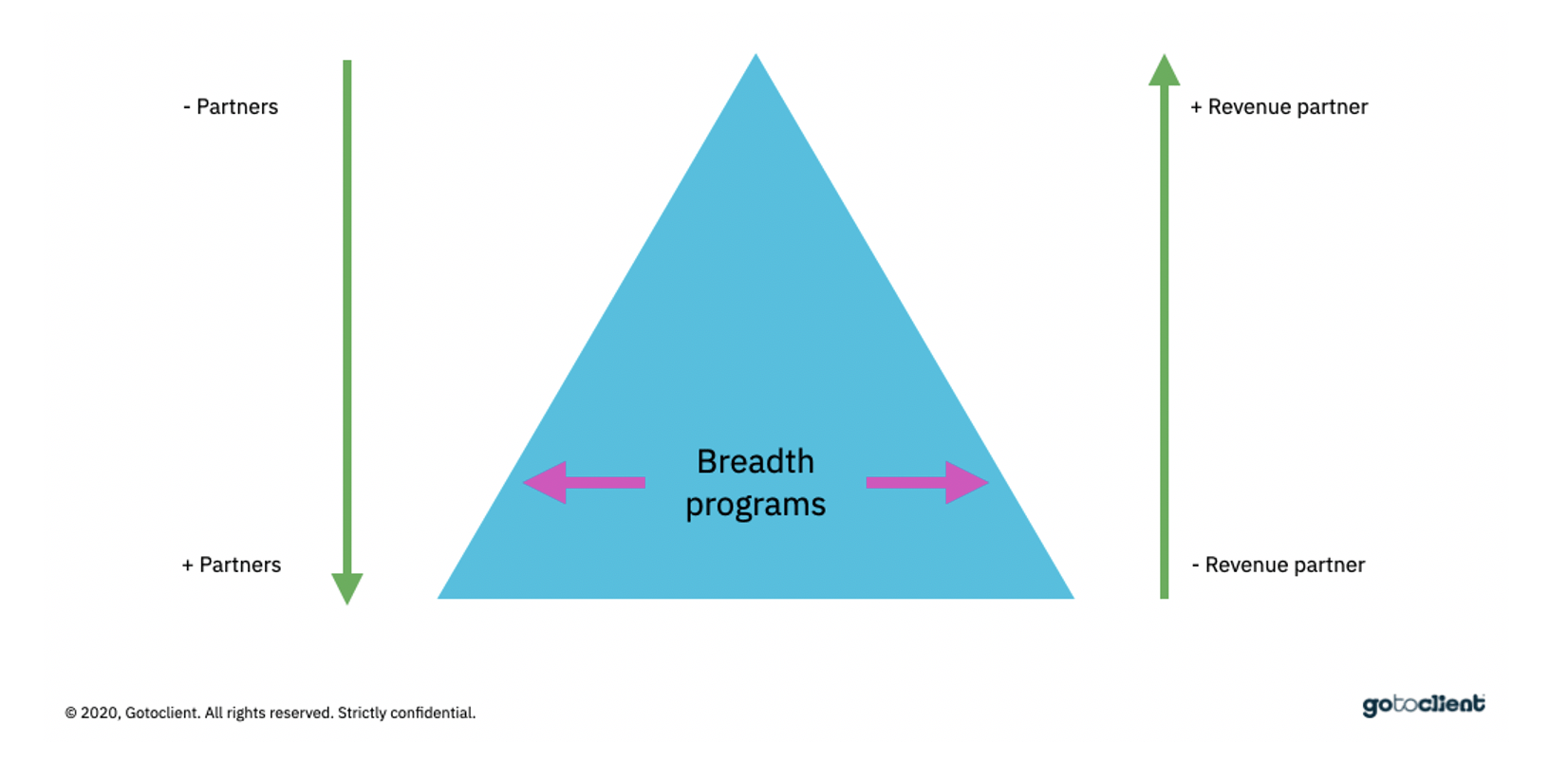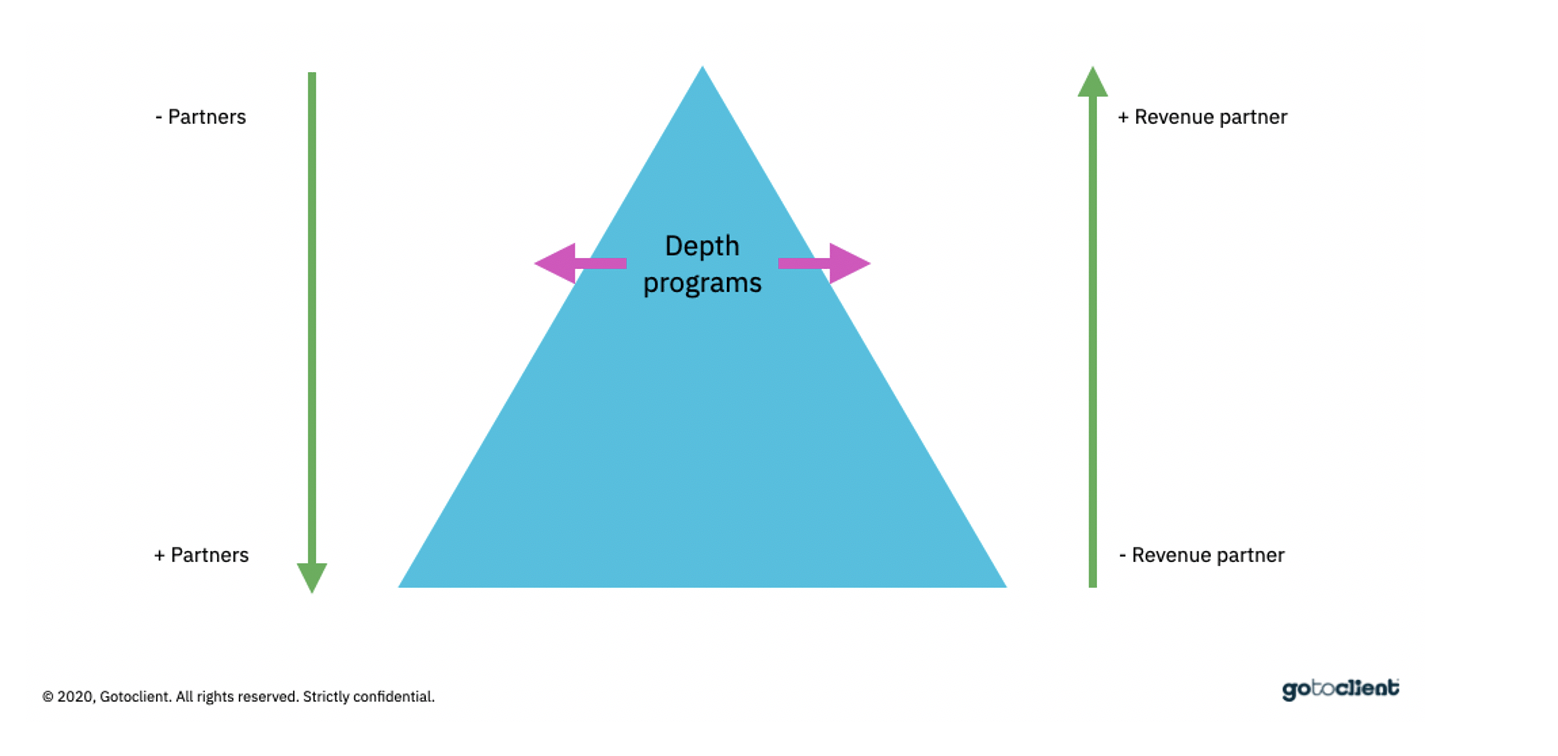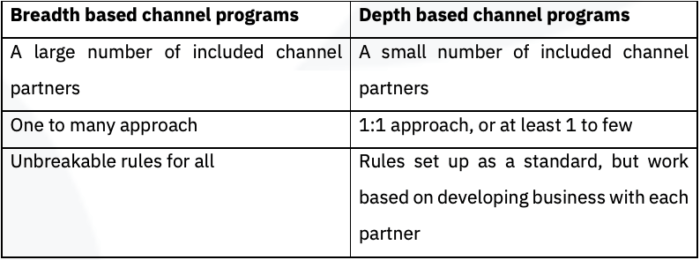The Channel Loyalty Program Definitive Guide 2025
Based on our extensive experience with channel programmes, we’ve developed The Definitive Guide to Channel Loyalty Programmes to equip marketing professionals with insights to design and execute successful channel strategies.
This advanced guide targets marketers who already understand the basics but seek actionable insights for improving their channel performance.
First, let’s see some relevant statistics. According to McKinsey, 94% of B2B decision-makers say the current omnichannel model is as effective or more effective than before COVID-19, but only 52% of marketers are using three to four channels consistently in their campaigns. McKinsey also states that multichannel approaches are 3.2 times more effective at boosting sales than relying on a single channel. The most used platforms to communicate with customers are video calls, e-commerce websites, live chat, and increasingly, mobile apps, according to McKinsey.
The most common reasons why marketers struggle to develop strong multichannel strategies are the complexity of managing multiple channels, integration issues with customer data, and challenges around budget allocation, as Deloitte points out.
In addition, McKinsey highlights that B2B customers now regularly use ten or more channels to interact with suppliers, showing an evolution from just five channels in 2016. Finally, companies delivering the best omnichannel experiences are improving their market share by at least 10% annually. Some other interesting statistics about channel loyalty and customer behaviour:
Companies that invest in personalisation tools for multichannel strategies see significantly higher customer retention rates, sometimes reaching up to 89%. Multichannel shoppers tend to have a customer lifetime value 30% higher than those using only one channel.
So, whilst there is an increased understanding from seasoned marketeers that multichannel strategies are important, there is still very little marketing that focuses on a specific distribution channel. Making channel entities (distributors and resellers) the focal point of your strategies can bring several benefits:
- 89% of B2B companies believe customer obsession is essential for driving revenue and profitability. (Digital Commerce 360, 2024).
- 50% of B2B companies plan to increase investments in partner ecosystem technology and processes. (Forrester, 2024).
- 30% of organisations report bandwidth demands increasing by over 50% annually, driven by growing data generation and traffic between cloud and on-premises applications. (IDC FutureScape, 2024).
- Companies implementing structured engagement strategies can boost customer retention rates by up to 40%. (MoldStud, 2024).
So, whilst there is an increasing understanding from seasoned marketeers that multichannel strategies are key, there is still very little marketing targeted to your actual distribution channel. Putting the channel entities (distributors and all kind of resellers) in the centre of your strategies can have several benefits:
- There are many quick wins. Whilst acquiring new clients, whether those are consumers or businesses is costly, activating a channel programme can usually make the difference where demand also exists! Typically, channel programmes will increase your market share in the selected channel.
- It’s a step beyond traditional channel programmes. Most companies operating with direct distribution channels, are already using sales channel programmes, typically consisting of back-end rebates and training. Typically, those channel programmes, which tend to be tier-based, are based on the channel readiness need from the brand, rather than on loyalizing channel resellers.
Why this guide?
Learn how to build a channel program.
Understand the key aspects of channel loyalty programs and apply them to your strategy
In this guide, you’ll find:
- · High-quality information about channel loyalty programs.
- · Hacks to build an effective channel program.
- · How to build a channel program that becomes a case study.
- · Free resources to help you with your programs.
1. The basics: the importance of Market Development Funds (MDF) and Co-Op funds
The Market Development Funds (or MDF) and Co-Op funds are both key strategies for distribution channels. According to the most recent Gleanster reports:
- 83% of brand marketers believe MDF and Co-Op programs have an impact.
- The average MDF annual spend is 12% of the overall marketing budget.
What are the differences between these two concepts? Which one should you use?
Market Development Funds (MDF):
The Market Development Funds are based on channelling monetary funds to channel partners against the execution of marketing activities. The key benefits are:
- When used correctly, as a brand, there is clarity on the KPIs. Your channel becomes an extension of your marketing team.
- Being upfront negotiations against the execution of critical activities, when used with the right level of strategy, brands can drive the demand through MDF.
A great example is Palo Alto Networks’ MDF programme in EMEA, which allows partners to access digital campaign templates and automated tracking dashboards. One campaign increased lead conversion by 35% in under 6 weeks.
Co-Op Funds:
Typically, Co-Op funds are for channel partners who have already sold the product or service. These funds are usually based on a percentage of prior sales. They are marketing-based rebates.
- · Co-Op funds can act as a sales driver, gaining higher revenues.
- · Sometimes, they can effectively replace sales rebates.
In order to better understand the difference between both concepts, here’s a comparison table:

Marketing funds, whether those are MDFs or Co-ops, are the first layer in channel loyalty programmes. Should you not have those, think about your goals to define which scheme works better. In any case, here are some best practices for both programs:
- Make your program simple: Your partners must understand the rules, goals and expectations. An online portal where partners can manage their account and keep tabs on their status is a good idea.
- Engage with your partners: Make sure your partners know they are the centre of the program. It’s advisable to provide training and have active and ongoing communication with them.
- Track results: This will help you find any shortcomings and compare the real-time results with your estimates.
- Have a process for monitoring and implementation: You must have a process to keep track of your partners, i.e. if they are running sales. Consequently, it is essential to have an optimal implementation tracking system.
Focus on making your program easy to understand and keep track of!
2. The process of creating a channel loyalty program
Let’s take a deep dive into the program setup process:
Pick the channel program that suits your business
Decide which kind of channel programme you need
According to your goals and needs, you should implement one or another programme. There are two significant types of channel loyalty programs.
- Based on the breadth goal: In this case, the main idea is to extend the channel in order to increase the overall run rate. The idea behind this is enlarging your channel pyramid.run rate. This will enlarge your channel pyramid.

- Based on the depth goal: The goal is getting more market share in existing channel partners, extending their turnover. Therefore, as a key difference to the previous goal, here, the idea is to obtain the best results from the current channel partners.

According to the programme key goal, channel programmes will have operational differences as follows:

Define which type of qualified channel partners you want:
When you consider implementing a loyalty programme, it’s essential to choose qualified channel partners that will help you to expand your business. In order to get qualified partners, consider collecting the following information from partners:
- Are they familiar enough with your brand / value proposition?
- Current engagements with competitor companies.
- Commitment level they can show.
- Knowledge about the service or product you sell.
- The average product or service volume they sell per month / year.
Think about training implementation
After choosing your partners, you should evaluate the need for the training to your channel partners. But first, you need to answer the following questions:
- Are your partners currently offering similar products or services to yours?
- Are they implementing marketing and communication strategies?
- Are they evaluating their performance continuously?
If all or some answers are “no”, you should reinforce the necessary areas with your partners in order to obtain efficient loyalty programme results.
The more you know about your product or service, the better they will be able to sell them. And so, with the other points. Consequently, it’s an essential investment in your program.
Setting your channel program goals
As in any loyalty programme, to make them successful, you first need to set objectives. Those should be SMART goals (Specific, Measurable, Attainable, Relevant, Time-bound).
On the other hand, consider what KPIs provide a better measurement of your goals:
- · Registrations rate: Getting new members is critical to generate revenue, especially of course, in the breadth type of programs.
- · Channel partner lifetime value: The lifetime amount of money each partner is expected to spend on your business during your relationship.
- Channel partner average lifetime value: Average order value x number of iterations per year x average retention time (years)
Of course, you should consider seasonality when identifying the average order value.
- Channel retention rate: The percentage of channel partners that are staying with your company. There’s no specific formula for that, but Jeff Haden on Inc has provided an accurate way of measuring the Customer Retention Rate, which can be extrapolated to channel partners as follows:
- Channel partner retention rate = ((CE – CN) / CS)) x 100
Where:
CE = Number of channel partners at the end of the period
CN = Number of new channel partners acquired during the period
CS = Number of channel partners at the start of the period
- Channel partner redemption rate: It shows a comprehensive overview of how relevant the program to the end consumer is. The redemption rate is calculated as on the below:
Redemption rate = Number of coupons redeemed / Number of coupons issued
- Repeat purchase rate: If your goal is breadth and you want to run sales, this metric will be essential for the program. It helps you to know the consumers’ loyalty level. In addition, with this formula you can estimate your sales volume. This is calculated as follows:
Repeat purchasing rate = Number of channel partners who have shopped more than once / Total Number of channel partners
Net promoter score: This metric calculates your clients’ experience to estimate your company’s growth. Here, you have to develop some key questions and answer them using a 0-10 scale. When you have the responses, you will be able to classify your customers in the following groups:
- Promoters (score 9-10): Users who are extremely likely to recommend your company.
- Passives (score 7-8): Users who are satisfied, but they’re not going to recommend your company.
- Detractors (score 0-6): Unhappy users who may hurt your company’s reputation.
Choose the right channel loyalty platform
Working with a platform is a must. Only in the case of depth-based channel programmes, where you work with a limited amount of channel partners (for example, less than 10), excel files can be the right support. Otherwise, when working with many partners, not running the programme on the right kind of platform can quickly cause loss of control.
In case you conclude you need a platform, in section 4 we attach a list with the most important ones.
Best Practices
Update your MDF and Co-Op processes by following these modernised best practices:
- Set measurable objectives from the start.
- Track ROI and attribution using analytics or CRM integrations.
- Align sales and marketing teams on expected outcomes.
- Standardise pre-approved campaigns for speed and scalability.
- Educate partners on how to use funds for maximum impact.
- Use digital platforms to streamline approval and reporting.
- Automate ROI tracking to reduce manual work and increase visibility.
See section 4 for our list of recommended platforms.
Keep an ongoing communication with partners
Communication is a crucial element of any channel loyalty programme. Our recommendations are:
Direct communication: In addition, it’s important to communicate separately with your partners, either face-to-face or online to build a closer relationship.
Develop a cohesive and proactive communication strategy: You can improve your communication effectiveness by considering:
- Develop the message definition you want to say to your partners.
Plan your communication frequency.
Segment your partners: in case the programme is broad, it is essential to adapt your communication to each type of partners in order to make your message relevant.
Talk directly with some of your partners! Be close to them.
3. Channel loyalty incentive types
There’re several loyalty programme incentives to choose in your programmes. Let’s explain each of them with some key recommendations:
Channel sales incentives
This is the most common incentive. Partners are rewarded according to their sales volume, margin or achieved goals. Incentives often take the form of gift cards, entertainment tickets, lunch tickets, tech gadgets, among others.
Key recommendation:
- Be realistic with your sales incentives: Have a very clear picture of how much you can invest and set the parameters accordingly.
- Update your sales incentives: For example, if your company is growing, you can reward your partners by increasing the value of the incentives on offer.
Don’t forget to budget and set realistic incentives
Channel SPIFFs (Sales Performance Index Funding Formula)
In this case, partners receive a percentage of the volume sale. Channel SPIFFs are more short-term incentives compared to others as they receive the cash automatically.
Key recommendations:
- Build your SPIFFs strategically: Focus your rewards mainly on the solutions that are working best.
- Make sure partners are funded quickly: Be quick when paying them.
Channel rebates
Key recommendations:
· Pay on the net price: If you offer multiple channel incentives, you must calculate the rebate accurately. That’s why it’s good practice is to pay a volume rebate on the net price.
· Don’t mix discount and rebate concepts: You must avoid the word “discount” as partners will assume the programme as an incremental discount. So, make sure you keep the conversation about rebates and not discounts.
Referral incentives
Here the main goal is to expand companies’ reach. So, partners are rewarded for deal registration and new opportunities identified. These incentives can also be gift cards, debit cards, etc.
Key recommendations:
- Amplify your incentives beyond your partners: Other businesses not included in your channel loyalty programme may also be recommending your company. If you find new opportunities thanks to a website that’s mentioning your business, provide the owners’ website with a referral too. But, in this case, you should offer simpler incentives, and if they want to start a formal collaboration with you, then you can give them higher value incentives. As a result, you’ll avoid your current partners feel less valued.
- Make sure your partners are not only focused on the incentives: Partners must feel motivated, but it’s important the motivation is not only to receive the incentive. Consequently, if you decide to give a less attractive type of incentive, the pace of work of your partners will decrease.
Consider providing incentives to those
who show the best commitment.
You can make them even more loyal to your company.
Warranty registrations
Warranty registrations your channel partners can replicate to their customers are a type of incentives you can provide.
Key recommendations:
- Give your channel partners an incentive: When partners gather new customer data, we recommend offering them an incentive. You can offer them discounts, gift cards, etc.
- Say thank you for their efforts: People want to feel they’ve made a difference. Call them or send an email to recognise their work. This will keep them motivated and engaged.
Enablement and training incentives
In most cases, partners work with more than one company, and of course, your competitors. That’s why providing enablement and training as an incentive is a good practice. You can offer quizzes, certifications, tickets to attend conferences or tradeshows, among others.
Key recommendations:
Don’t focus on conventional training: Is not usually attractive training where partners only listen to information for an hour. Investigate the most original and based on participation types of training to motivate your partners.
Ask what they want to learn about: Maybe you are focusing on topics that they already know or are not interested in. That’s why we recommend asking what they prefer in order to make the learning enriching.
Activity-based incentives
Like Co-ops or MDFs, reward partners according to the activities they manage.
Key recommendations:
- · Don’t reward equally all activities equally: It’s essential to reward according to the importance of the activity. The more difficult the activity is, the more important the reward will be.
- · Develop activity-based incentives with specific tasks: Make a list of the activities that should be rewarded.
Partners with lower engagement don’t
have high expectations of incentives.
Activity-based incentives are a good option for them.
4. Channel loyalty software platforms
360insights
CR Worldwide is a complete platform that includes channel programs, employee recognition, sales incentives, customer loyalty, online learning, among others. It helps you engage with your channel partners and enables you to build an easy-to-use platform for you and your partners. They also offer several resources to help companies make loyalty programs.
Apex loyalty
Apex loyalty provides tools to help you interact and engage with partners, alongside program segmentation and customisation of incentives and communications.
LoyaltyXpert
LoyaltyXpert is a comprehensive package that helps you develop customer loyalty programs, influencer loyalty programs and channel loyalty programs. It offers Loyalty programs for specific industries such as eCommerce, FMCG, Education, Automotive, Electrical, Paint, Employee and NBFC loyalty programs.
Channeltivity
Channeltivity is for deal registration, requests, channel management, training and co-branded activities. It integrates with HubSpot CRM and Salesforce.
Allbound
Allbound is a channel collaboration platform that offers real-time access to sales enablement, marketing tools and resources.
Impartner
Impartner is a SaaS PRM that integrates with a number of CRM systems.
LogicBay
LogicBay combines a channel technology stack with a proprietary channel profit-centre methodology.
Magentrix
Magentrix provides channel loyalty programs portals.
Zinfi
Zinfy allows partner relationship management, partner marketing management and partner sales management.
Elioplus
Elioplus offers a complete platform with lead distribution, deal registration, partner directory, onboarding and library services.
Point Shop
Point Shop helps you increase sales with their channel loyalty software. They work across many industries: utilities, technology, construction, manufacturing, finance and professional services.
SolvereGlobal
This platform helps you develop an incentive structure, and it also helps you create an emotional connection with your partners through experiences. In addition, it also includes coupons/QR codes, gamification and social media integration.
Capillary
Capillary is there to help you build stronger relationships with partners.It also provides analytics for the sales team.
RunRunPromos
Finally, RunRunPromos, our own platform, helps you build B2B & B2C promotions, but also channel loyalty programs. You can create a customised site, make changes at any time, get real-time metrics, have an incentive panel and communicate with fully customisable automated emails. All this in 20 different languages.
5. [Checklist] Steps to launch a channel loyalty program
To recap the learnings from this guide:
- Think about MDF and Co-Op funds as the first layer.
- Make sure you understand the difference between MDF and Co-Op funds.
- Define a clear goal for your channel loyalty program.
- Define and offer the incentives that best fit your business and goals.
- You will probably need a software platform, so take your time to choose the right one.
- Plan the launch of your channel loyalty program in great detail.
- Update your program based on your channel partners’ feedback.
Finally, in order to build a complete Channel loyalty program, you can download our checklist for free!If you have any questions, don’t hesitate to contact us!
A channel loyalty programme is a strategic system to reward resellers and distributors with incentives—like MDF, Co‑Op funds, rebates, SPIFFs or referral bonuses—to strengthen engagement and boost market share via the channel.It operates on clear goals, measurable targets and ongoing communication.
Multichannel B2B buyers now use 10+ channels to interact with suppliers, and companies with mature omnichannel programmes grow market share by 10%+ annually – multichannel strategies are 3.2× more effective than single‑channel approaches.
MDF (Market Development Funds) are budgeted marketing funds for partner‑led activities. Co‑Op funds are rebates tied to actual sales. Brands using both can track ROI and treat partners like marketing allies.
Key incentives include: • Sales incentives (gift cards, gadgets) • SPIFFs (short‑term cash rewards) • Rebates • Referral bonuses • Warranty registrations • Training & enablement rewards • Activity‑based incentives tied to strategic tasks.
For programmes with many partners or depth‑oriented goals, using a dedicated platform (e.g., Channeltivity, Allbound, Impartner, RunRunPromos) ensures scalability, automated tracking and visibility; small depth‑only setups (<10 partners) can use Excel.
Steps include: choosing goals (breadth vs depth), selecting partners, defining SMART objectives, selecting incentives, choosing a platform, designing launch plan, training partners, setting up tracking, and iterating based on feedback.
Track metrics like partner registration rate, average partner lifetime value, retention rate, redemption rate, repeat purchase rate, and partner NPS – all important to prove ROI and adjust strategy.


